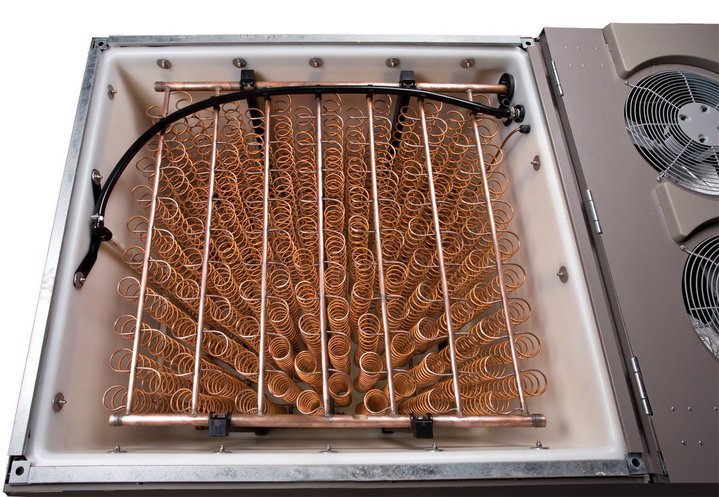
Solar cooling system is a cooling system for buildings built from the internal cooling system, which is powered by solar-powered electricity to reduce and maintain low temperatures. This allows the body to adapt to the right temperature. Solar cooling system is clean and does not create an environmental impact, which is the main cause of environmental problems with the current continuous increase rate.
Generally, Solar cooling systems are found in office buildings or shopping malls, where there is a lot of space that requires cooling evenly and consistently. Installing a Solar cooling system will save costs associated with keeping the temperature low. During the time with solar energy.
Working principle of Solar cooling system
Work using an external heat source to find the refrigerant inside the cooling tank. This causes internal pressure in the closed circuit system and the discharge of heat from the system from the solar system.
Refrigerants are substances with ingredients that absorb heat from the environment and can generate cooling when necessary components (compressors and evaporators) will systematically transition from the liquid phase to the gas phase and then back again.
Use refrigerant evaporation From the process of being steamed Through the conduction of heat from the system Cool the remaining liquid The adsorption cycle will complete the pressure. Dissolve refrigerants in sorbents or liquids easily instead of compressor.
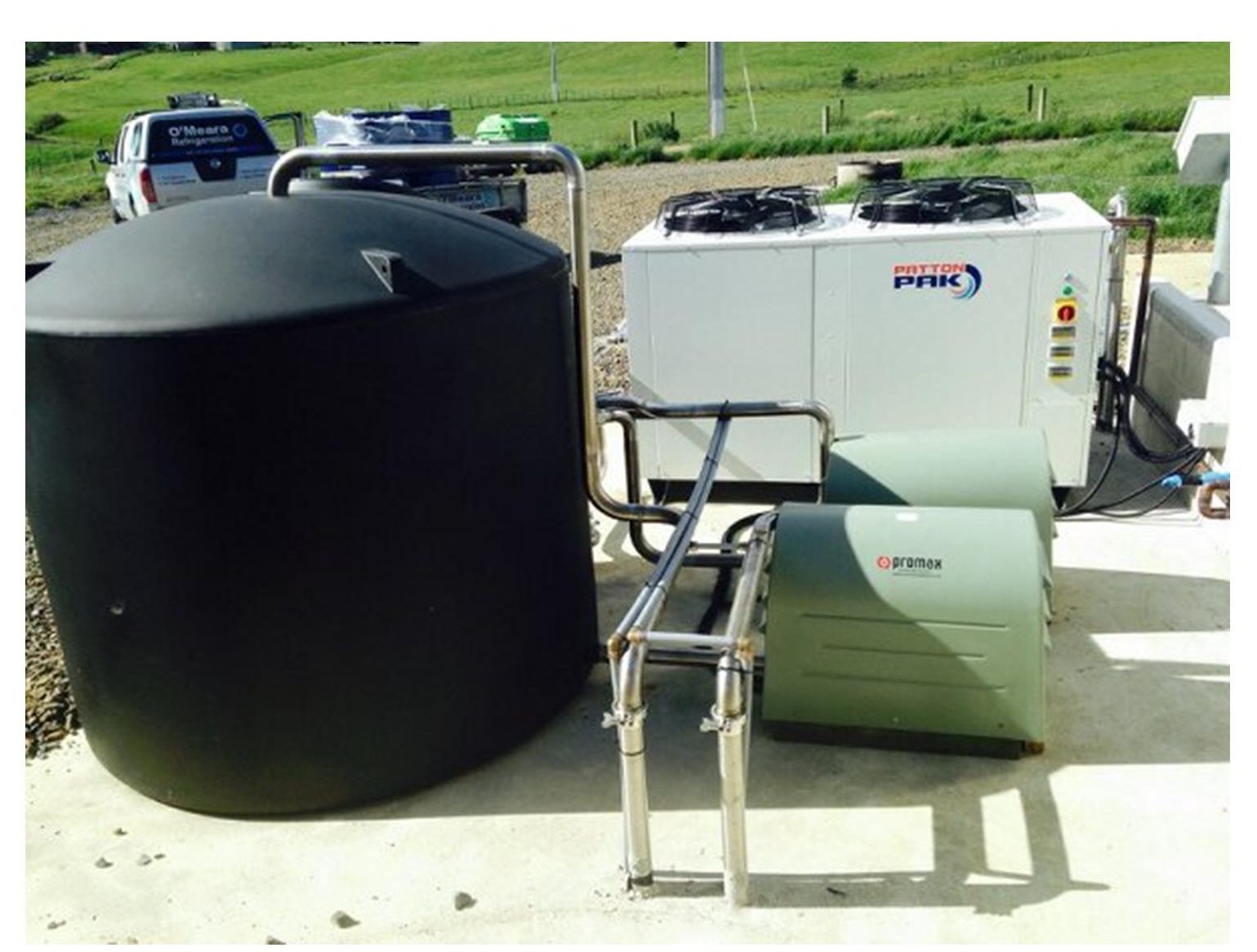
The desiccant cooling process progresses
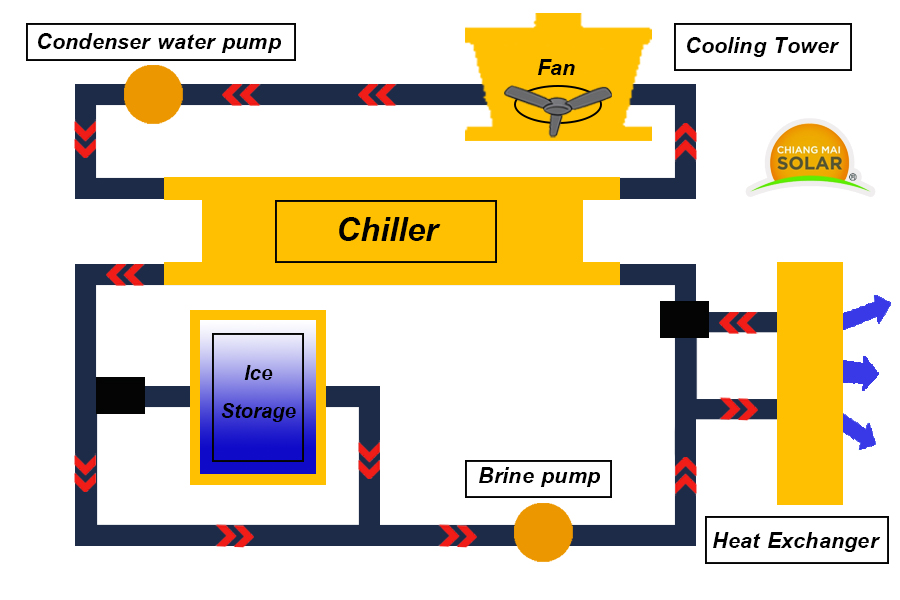
The adsorption cooling cycle consists of four parts: an absorber, a generator, a condenser and an evaporator. It acts as a cooling plant in the Solar cooling system because it is the point where the cooling is generated.
Desiccant cycles are one of the most popular solar cooling systems today. Solar power can be used to power the system to keep the system running.
Desiccants absorb the water vapor and remove the moisture from the process air in the dehumidification, or absorber, unit. A transfer results from the difference in vapor pressure, thus releasing heat due to the condensation of water and creating a heat exchange.
The air is then introduced into the space or into an evaporative cooler for further cooling while the diluted desiccant is sent to the regenerator. However, before the diluted desiccant can enter the regenerator, it must pass through a liquid-liquid heat exchanger and a heating coil in order to raise its temperature.
Once in the regenerator, the heated, diluted desiccant is exposed to regenerative air, causing moisture to transfer from the diluted solution to the air. This transfer is due to the created difference in vapor pressure.
Next, the resulting, more concentrated desiccant passes through the liquid-liquid heat exchanger once again as well as a cooling coil and then moves back into the dehumidification unit, allowing the cycle to repeat.
Solar cooling system in the daytime.
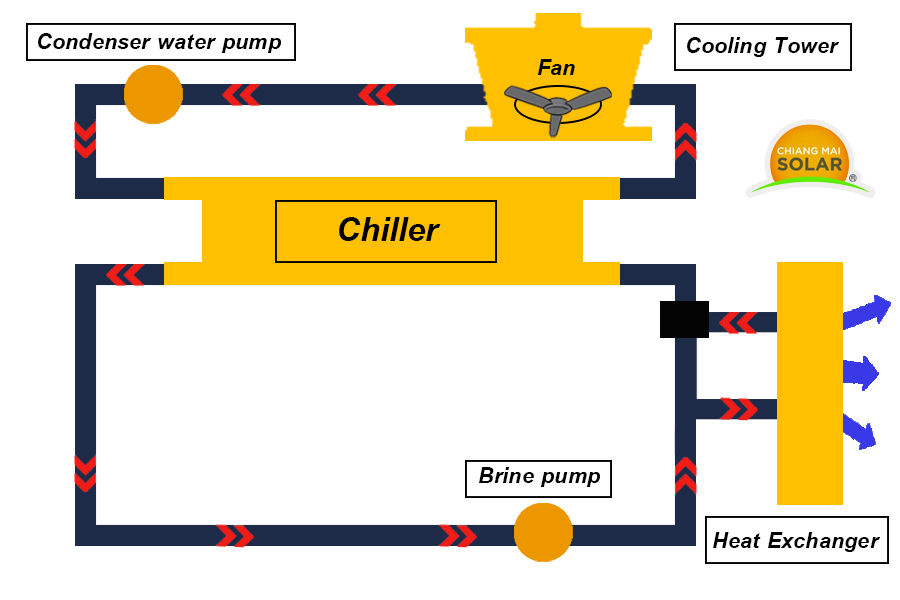
The solar cooling system works in the daytime, which provides solar energy for the system through chiller operation, which is connected to the Cooling Tower to transfer the heat of high-temperature coolant. The fan inside cooling tower helps to transfer heat out of the system more efficiently. It is then transferred to condenser water pump, a device that helps to cool the refrigerant with a vapor state. Condenser the heat out but maintains the same pressure state and circulates the cooling system through the pump to the heat exchanger.
Cooling system at night
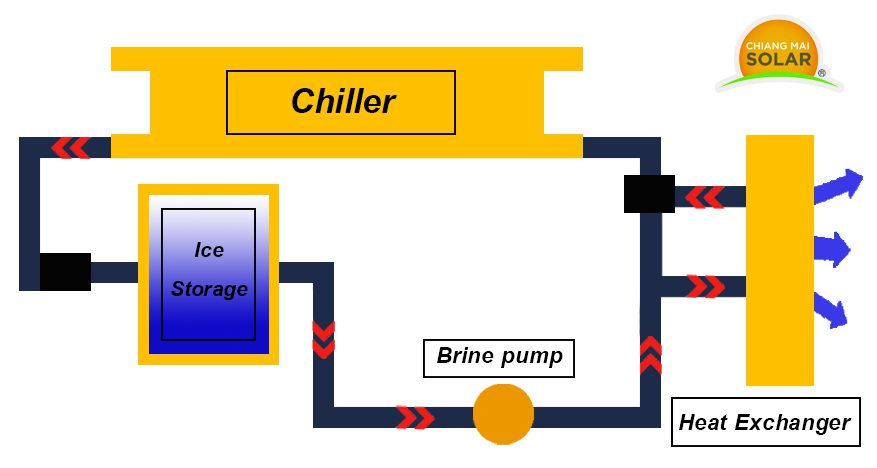
For the operation of the Cooling system at night Are different from daytime Because at night There is no solar energy which is the power source for the system. It requires integration with the Ice storage system, which has a variety of functions. At the household level, the Internal Melt Ice-On-Coil Storage System is a suitable cooling system because it retains the coolness in the form of ice. From the refrigerant circulating into the coil Which is submerged in a tank filled with water This causes the water to have a low temperature and freezes. For paying the coolness of the system When the refrigerant flows inside the pipe Melting the ice from the inside out. Refrigerant has decreased temperature. And then be used for further cooling and will be circulated in the cooling system from cold storage through the pump to the heat exchanger.
solar mechanical cycles, works very differently from the absorption and desiccant cycles. Instead of creating an entirely new system, solar mechanical cycles attempt to combine solar powered mechanics with conventional cooling systems. In this cycle, solar power is used to fuel the actual engine that produces the energy used to operate the entire cooling system instead fueling the absorption chiller, like it does in both the absorption and desiccant cycles.
Currently, Solar Cooling System has high initial investment costs. Compared to installing air conditioner due to the less supply and expensive system components. Must be ordered and imported from abroad but worth it for a long term investment. Given the cost of energy and maintenance due to the long service life of the equipment, Ice storage Systems are now supporting the Solar Cooling System to keep it cool and use it during the night. This is a time when solar energy does not drive the system.